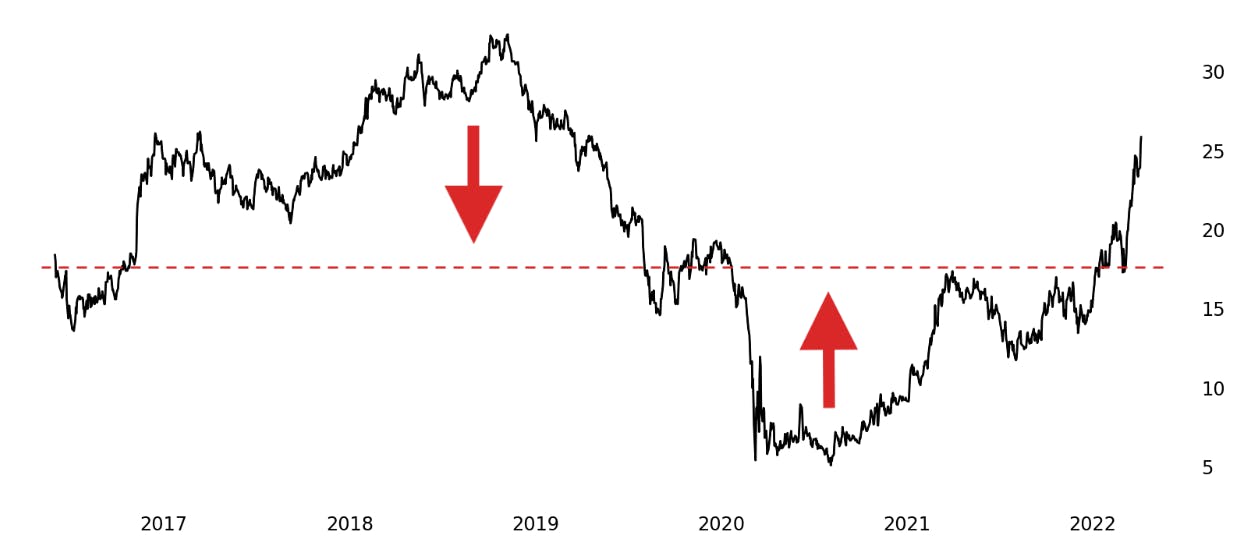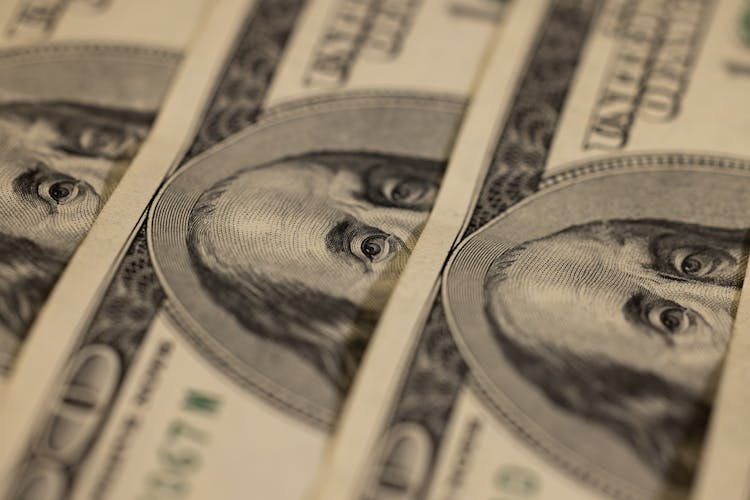Interest Rates
What is Interest Rate Trading?
Interest rates can affect everything from a standard car loan to the entire stock market. Higher interest rates often suggest less economic growth or a contractionary period, whereas lower interest rates can spur economic growth or an expansionary period. However, there’s greater nuance to interest rates which can provide an opportunity for traders to speculate on the future path of rates or manage risk in investments and everyday life.
US Treasury interest rates are some of the most oft-quoted benchmarks in the entire asset class, and they are commonly referred to as the risk-free rate of return in investment modeling. Treasury rates (or yields) are referenced in daily news items concerning markets as well as loan agreements affecting both everyday people and large public companies. They are the underlying market for many popularly traded interest rate products.
What is the Difference Between Interest Rates, Yields, and Bonds?
Interest rates, yields, bonds, and notes are all parts of the same organism, and they all move in tandem. Interest rates and yields both refer to the percentage associated with a given Treasury or alternative interest rate market. Bonds and notes present the price associated with the same markets. The most basic relationship dictates that interest rates (or yields) increase as bond (or note) prices fall, and vice versa.
Let’s break that down further:
- Interest rates are the percentages charged to a borrower by a lender on a given loan amount for a given duration of time.
- Yields are another term for the percentage paid on a given instrument like bonds or notes or dividend-paying stocks.
- Bonds represent the price associated with a loan taken out by a government or corporation that has a loan amount and interest rate built-in.
- Notes are another term for the price associated with a debt security, similar to bonds, that tend to indicate a shorter time frame.
At the end of the day, you can view interest rates as being derived from the bond or note price. For a given move lower or higher in price, there is a coinciding move higher or lower in rates. Many find it easiest to stay in the world of rates so as to not confuse ideas of where you think interest rates are headed with corresponding and inverse movements in bond prices.
What is the Difference Between the 10 Year Treasury Yield and the 30 Year Treasury Yield?
The “normal” state of a yield curve is usually defined as having higher interest rates for longer durations. Thus, 10 Year Yields are commonly higher than 2 Year Yields, and 30 Year Yields are usually higher than them both. Interest rate products can also see an increase in volatility, or price movement, with an increase in the time frame, or duration.
The 10 Year US Treasury Yield measures the interest rate on 10 Year US Treasury Notes. Given its central position in the US Yield Curve between short-term rates (2 Year) and long-term rates (30 Year), the 10 Year US Treasury can garner some of the greatest trading volumes. It can be thought of as the S&P 500 of interest rates as it is the quoted benchmark in many news items pertaining to this asset class. You can trade this market with Small 10 Year US Treasury Yield futures.
The 30 Year US Treasury Yield measures the interest rate on 30 Year US Treasury Bonds. Given its greater duration than the 2 Year and 10 Year, the 30 Year US Treasury can be viewed as a longer-term benchmark that moves with greater volatility than other parts of the US Yield Curve. You can trade this market with Small 30 Year US Treasury Yield futures.
The 2 Year US Treasury Yield measures the interest rate on 2 Year US Treasury Notes. Given its lesser duration than the 10 Year and 30 Year, the 2 Year US Treasury can be viewed as a shorter-term benchmark that moves with lesser volatility than other parts of the US Yield Curve and can move with greater correlation to the activity from the Federal Open Market Committee (FOMC). You can trade this market with Small 2 Year US Treasury Yield futures.
Types of Interest Rate Markets
Interest rate markets can be accessed in the form of cash or spot, ETF shares, or futures. Most cash or spot Treasury products are only accessible by large institutions, and they tend to carry a large size. ETFs such as TLT and TBT can be easier for the everyday trader to consume, but the way they look is not directly related to a Treasury yield or price. In comparison, futures can be low-cost, direct avenues to trading interest rates.
Example US Treasury Yield Markets
- Small 2YR US Treasury Yield Futures (S2Y) let you access the 2 Year US Treasury Yield in a relatively small, low-cost product that moves in $10 increments per 0.01% (or 1 basis point).
- Small 10YR US Treasury Yield Futures (S10Y) let you access the 10 Year US Treasury Yield in a relatively small, low-cost product that moves in $10 increments per 0.01% (or 1 basis point).
- Small 30YR US Treasury Yield Futures (S30Y) let you access the 30 Year US Treasury Yield in a relatively small, low-cost product that moves in $10 increments per 0.01% (or 1 basis point).
- 2-Year T-Note Futures (ZT) are a more traditional product tracking the 2 Year US Treasury Note price in $7.81 increments per 1/8 of 1/32 of one point.
- 10-Year T-Note Futures (ZN) are a more traditional product tracking the 10 Year US Treasury Note price in $15.53 increments per 1/2 of 1/32 of one point.
- U.S. Treasury Bond Futures (ZB) are a more traditional product tracking the 30 Year US Treasury Bond price in $31.25 increments per 1/32 of one point.
How to Trade Interest Rates
Interest rate trading reflects whether you think rates will move higher or lower in the future. Those thinking rates will move higher can buy interest rate (or yield) products or sell bond (or note) products, and those thinking they will fall can do the opposite.
You can also trade interest rates as a hedge against future loans or debt investments. If you are planning to take out a mortgage or car loan in the future and want to hedge against rates rising between now and then, you can buy interest rates. If you were planning future investment in a debt instrument like Treasuries or corporate bonds and want to hedge against rates falling between now and then, you can sell interest rates.
Interest rate futures can offer the shortest path from idea to execution in this asset class given their relatively small size and straightforward nature. Think short-term rates will move lower? You can sell Small 2YR US Treasury Yield futures. Wanna lock in the current rate for your upcoming 10-year mortgage? You can buy Small 10YR US Treasury Yield futures.
Interest Rate Futures Trade Example
Small 2YR, 10YR, and 30YR US Treasury Yield futures yield profit and loss in direct correlation to movement in corresponding interest rates. If you buy one of the products and the corresponding interest rate market increases by 0.01%, then your profit would be $10, theoretically.
Trade | Movement | Profit/Loss |
|---|---|---|
Sell 1 S2Y Future | 2 Year Interest Rate from 2.00% to 1.50% | +$500 |
Buy 1 S10Y Future | 10 Year Interest Rate from 2.50% to 2.55% | +$50 |
Buy 1 S30Y Future | 10 Year Interest Rate from 3.00% to 2.75% | -$250 |
*These are example trades using theoretical values
How do Changes in Interest Rates Affect Futures Trading?
The Federal Open Market Committee (FOMC), which is highly associated with the Federal Reserve (or the Fed), is one of the largest influences on interest rates. Their projections and changes to the Fed Funds Rate can directly move short-term interest rates like the 2 Year US Treasury Yield as well as longer-term interest rates to a less direct degree. The FOMC hiking or cutting the Fed Funds Rate can cause other interest rates to move higher or lower, respectively.
Interest rate changes have a direct effect on interest rate futures:
- Higher interest rates can mean higher interest rate (or yield) futures and lower bond (or note) futures
- Lower interest rates can mean lower interest rate (or yield) futures and higher bond (or note) futures
Interest rate changes have an indirect effect on equity index (or stock market) futures:
- Higher interest rates can mean a contracting economy and lower stock market prices
- Lower interest rates can mean an expanding economy and higher stock market prices
How to Express your Opinion with Interest Rate Trades
If you think... | Then you can... |
|---|---|
2 Year US Treasury Yields will increase, | Buy Small 2YR US Treasury Yield futures. |
2 Year US Treasury Yields will decrease, | Sell Small 2YR US Treasury Yield futures. |
10 Year US Treasury Yields will increase, | Buy Small 10YR US Treasury Yield futures. |
10 Year US Treasury Yields will decrease, | Sell Small 10YR US Treasury Yield futures. |
30 Year US Treasury Yields will increase, | Buy Small 30YR US Treasury Yield futures. |
30 Year US Treasury Yields will decrease, | Sell Small 30YR US Treasury Yield futures. |
Interest Rate Futures Trading Strategies
Mean reversion is one of the most common strategies in trading interest rates. It contends that interest rates have a long-term mean (or average) level, say 1.5-2.0%, and while they tend to move higher or lower they will always return to it at some point.
S10Y \ Small 10YR US Treasury Yield

Source: dxFeed
Trading interest rates with mean reversion would contend that the trader buys interest rates when they are below their average and sell them when they are above their average.
Trade Interest Rate Futures with the Small Exchange
Ready to trade interest rates but not sure how to access the Smalls? Read our Derivatives Trading for Beginners guide for step-by-step instructions on how to make your first trade.







